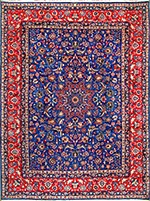Textiles Studies

Textile Research Works
Date of this Version
2004
Document Type
Article
Citation
From: Ars Orientalis, 2004, Vol. 34, Communities and Commodities: Western India and the Indian Ocean, Eleventh-Fifteenth Centuries (2004), pp. 172-194.
Abstract
This article explores the potential role of textiles in the transfer of mathematical knowledge from the Indian subcontinent to the central Islamic lands and west- ward to an emerging modern Europe through an inquiry into prospective tech- nologies of textile manufacture and pattern-making. Ikat textiles of the ninth and tenth centuries, found in Egypt but presumed to be from Yemen, serve as a means to explore possibilities of numeration and treatment of the spatial dimension. An initial attempt is made to separate patterning from the technology of textile pro- duction in an effort to treat the mathematical possibilities that patterning offers for the application of mathematical knowledge. This article proposes an ontology of pattern, distinct from the category of a textile itself, which raises significant questions pertaining to the transmission of mathematical knowledge in relation to expanded trade routes in the eighth through tenth centuries, coincident with Islamic developments in the understanding of two-dimensional space.
Included in
Art and Materials Conservation Commons, Art Practice Commons, Fiber, Textile, and Weaving Arts Commons, Indigenous Studies Commons, Museum Studies Commons


Comments
Published by Freer Gallery of Art, The Smithsonian Institution.